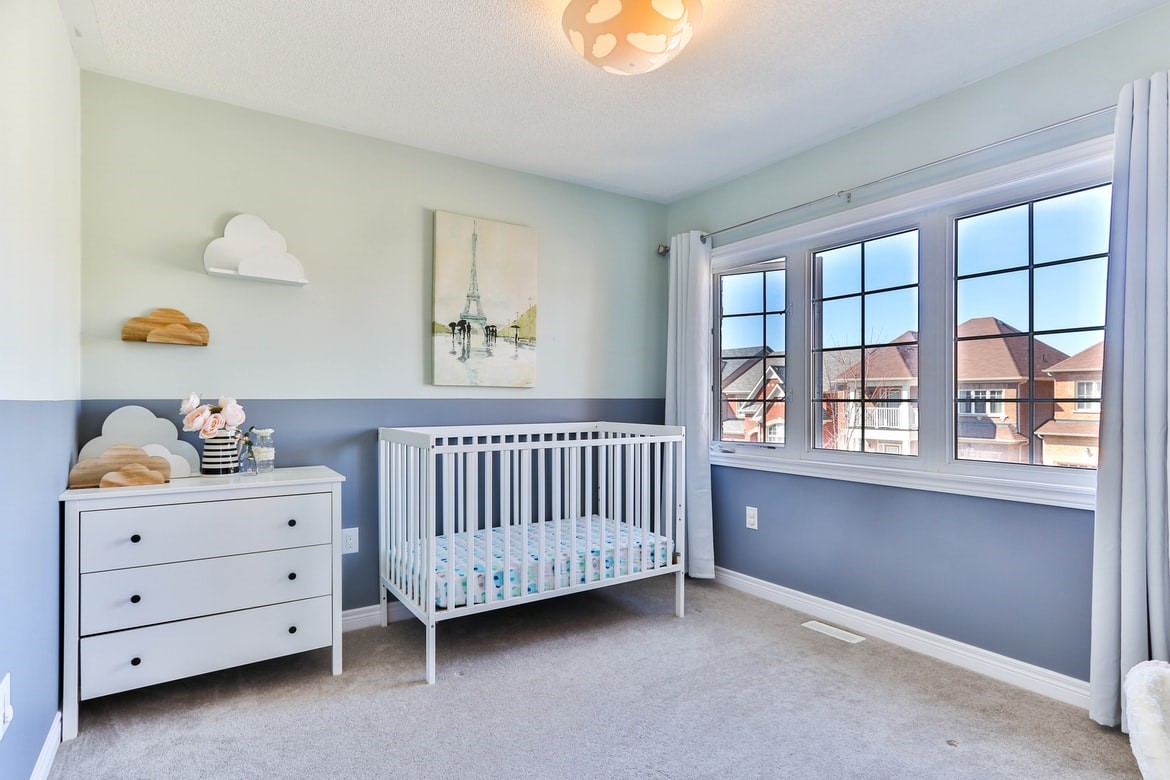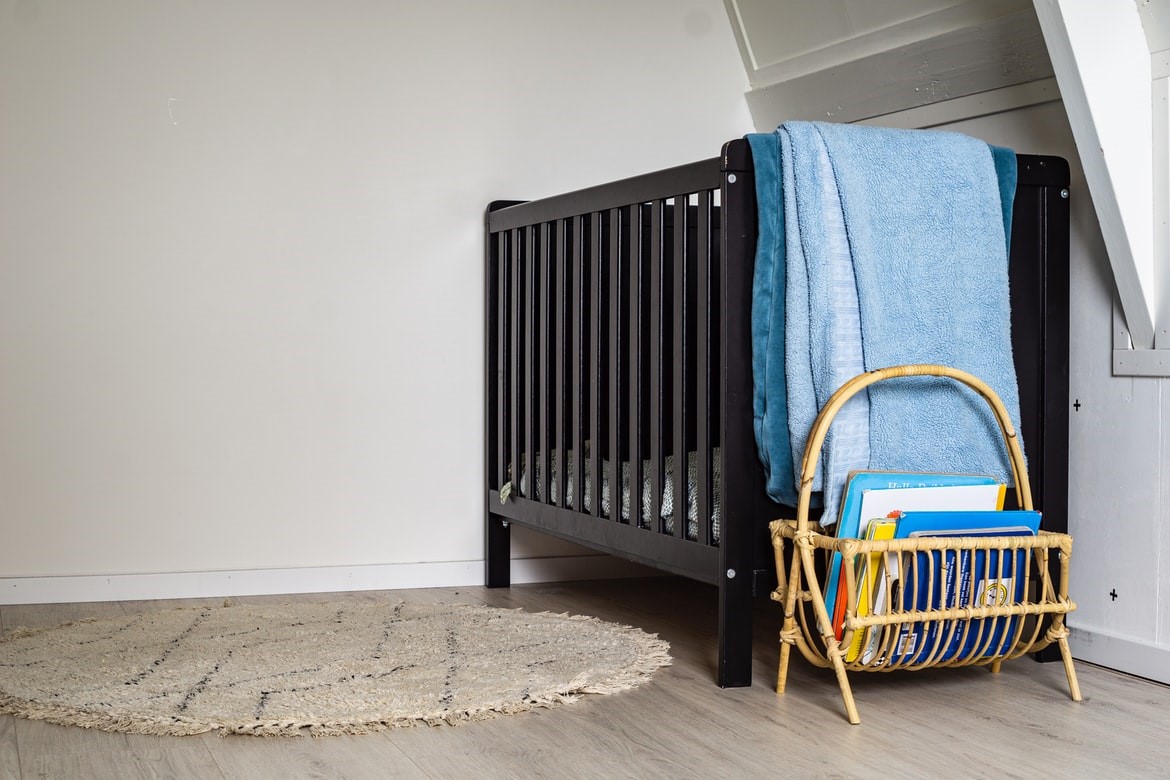One of the first things parents have to get for their nursery is a crib. Even when a room has already been designated as the baby room, it does not start to feel like one until a crib is placed inside. Understandably, a crib is extremely important, seeing as newborns sleep about 16 hours a day. However, as soon as parents begin shopping for a crib, they quickly learn that they have two options: a mini crib vs a crib.
There are several key differences between a mini crib and a standard crib. First and foremost, the main difference between the two is the size. While standard cribs often come with standard dimensions of 52 inches long and 28 inches wide, mini cribs typically come in smaller ranges. Additionally, other differing factors to be considered include weight support, wheels, sheets and bedding, price, and portability.
This article will discuss the key differences between a mini crib and a crib so that parents can choose which one is best for their needs.
Mini Crib vs Crib: Differences Explained
-
Size

The first important difference between a mini crib and a standard crib is the size. Upon first look, this is the difference that stands out the most.
A standard crib is typically built to be 52 3/8 inches long and 28 inches wide. On the other hand, a mini crib does not come in standard dimensions. While mini cribs can be as wide as a standard crib (28 inches), they can also come to a tad narrower at about 24 inches. The biggest difference between a standard crib size and a mini crib size is the length. Mini cribs come in a range of lengths, usually between 36 and 43 inches long.
Height can also differ between a standard crib and a mini crib. Standard cribs are usually fixed at a mattress height of around 26 inches. Meanwhile, a mini crib can be just as tall or possibly lower than a standard crib. Some mini cribs are built to be about 12 to 17 inches away from the ground.
Size is an important factor to consider, especially for parents with space limitations. Parents with twins or triplets would have to fit multiple cribs in a room and mini cribs are better in terms of space allocation.
Mini cribs are also ideal for temporary residence. For example, if the baby stays over at their grandparents’ during the weekends, a mini crib would be easier to have instead of a full-sized crib.
-
Weight Support
Built a little bigger, it should come as no surprise that standard cribs are listed to be able to hold more weight than a mini crib. Usually, a standard crib is expected to be able to hold babies up to 30 pounds (approx. 13 kilos). However, there are standard cribs that can also be found to be able to hold even up to 50 pounds.
Understandably, mini cribs would typically be able to hold less weight. Since mini cribs are not as standardized as their full-sized counterparts, mini cribs are listed to be able to hold babies between 15 to 30 pounds – possibly even less.
The weight capacity that a crib can carry is an important factor to take note of as it would correspond to the safety of your baby.
-
Wheels
Another difference that parents are likely to see between mini cribs and standard cribs is that mini cribs often come with wheels. Although not all the time, it is much more common to find wheels in mini cribs than it is in standard cribs. This makes mini cribs easier to move from one area to another.
However, wheels can also be problematic for some parents. Firstly, wheels can make cribs less stable. While wheels can indeed be locked in place, they can still cause the crib to wobble at times. Secondly, some parents don’t like how wheels look on a crib. For those parents who care a great deal about the aesthetic of their nursery, wheels can pose a problem.
-
Sheets and Bedding
Since standard cribs come in a more typical size, it is not difficult to find crib sheets and beddings that fit perfectly for standard cribs. As long as the sheets and beddings are rated for a standard crib, they would come with the appropriate dimensions (52 inches long x 28 inches wide).
Unfortunately, this is not the case for mini cribs. Since mini cribs don’t come in a standard size, it can be quite difficult to find crib sheets and beddings that fit perfectly. This means that parents would need to find crib sheets and beddings that are tailor-made to fit perfectly in a mini crib. This can make it difficult for parents to find sheets and beddings with designs and colors that they actually want.
-
Price
Coming in with smaller dimensions, it should come as no surprise that mini cribs are typically cheaper to get than standard cribs. However, that does not necessarily mean mini cribs are a better value for your money. Some would argue that mini cribs are actually worse in terms of value compared to a standard crib because they are less sturdy, and babies can actually outgrow them pretty quickly.
In terms of value, parents might rather opt for a standard crib. The price difference between the two is not that significant and parents will surely get more bang for their buck with a standard crib. However, every penny counts, and mini cribs can still get the job done for those with a tighter budget.
-
Portability

Due to the size difference, mini cribs and standard cribs differ in terms of portability. Since mini cribs can be much smaller than their standard counterparts, mini cribs are excellent options for portability. This makes traveling with mini cribs significantly easier compared to having to travel with a full-sized standard crib.
Another factor that differs mini cribs and standard cribs is that mini cribs can often be folded much easier than a standard crib. This also adds to the portability of mini cribs compared to a standard crib.
Mini Crib vs. Crib: Which is Better?
Both standard cribs and mini cribs have their own pros and cons. Thus, it is important to understand the key differences between the two so that parents can decide which suits their needs the most. There are also other alternatives to cribs too.
For most parents, standard cribs would probably be better. Standard cribs are highly recommended since they are well-built, sturdy, and are easy to find sheets and bedding for. Furthermore, it will take longer for the baby to outgrow the standard crib compared to a mini crib.
However, there are situations where mini cribs can be more than enough. For one, parents with limited space might not have a choice for the matter and would have to choose a mini crib. These are especially common for parents with multiple babies or nurseries with irregular layouts. Mini cribs are also highly common for temporary residences like vacations and visits.
When it comes to safety, the American Academy of Pediatrics does side that one is safer than the other. Thus, parents should be able to feel safe with either choice.